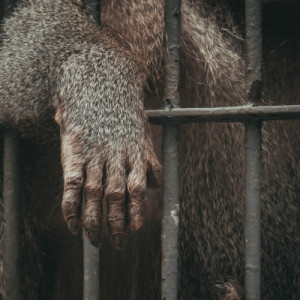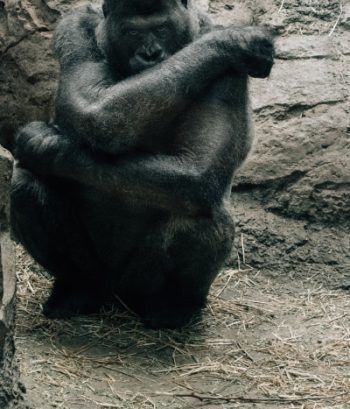History and Mythology of the Tornit
Back in the old times, when Baffin Island was still known as Nunatsiarmiut (new-naht-saw-me-oot) and before European influence, the Inuit people lived near the coast of Kangiqtualuk. They were master kayak-builders and survived by means of subsistence—they were excellent hunters, regularly bringing in seals and whales to feed the people in their villages. They were not the only people living on the island though, they lived under the shadow of fear with a tribe of much bigger and aggressive people. Their way of living was different than their Inuit counterparts, as they could not build kayaks, tan hides, or preserve food in the traditional ways of the north.
These people are known as the Tornit (tore-knit) and possessed not only a larger stature but extraordinary strength; they would build houses out of stones and boulders that were much too large for any Inuit person to lift. These creatures, although human-like, are not human at all, with long arms and legs, they present more like a large ape or Neanderthal. Although they are bipedal in nature they would still be mistaken for a bear at a distance, due to their hairy appearance. Despite their largely physical advantages over a regular man, the Tornit have exceedingly poor eyesight which hinders their ability to hunt. They often smell like ghastly rotting flesh at worst and at best as if they have been freshly sprayed by a skunk—this concept also connects them largely to the creature of the southern United States known as the Skunk Ape.
So What’s the Story?
There is an abundance of lore available on these creatures through the published anthropological surveys of the Northern territories from the late nineteenth to the early twentieth centuries. Franz Boas wrote down the oral traditions of the Inuit people from Baffin Island to Hudson Bay and captured many stories of the unscrupulous nature of the Tornit. There were some inconsistencies, with some villages recalling oral traditions that painted the Tornit to be a friendlier beast and even other recollections that the Tornit were actually hunted as a food source.
Their tense relationship with most of the Inuit tribes may have had less to do with the race of people as a whole and more so with the idea that neither the Inuit nor the Tornit seemed to be too fond of each other in general. The overwhelming consensus with all of the information available in books and online suggest they are a morally repugnant, dim-witted, unpleasant, and vicious creature. All of the lore taken into consideration, the reputation that the Tornit have, smacks more of a feudal war than that of a monster that hunts its prey from the shadows, but the isolated incidents of Tornit invading Inuit villages while the men were away simply to kill all of the women and children, in my opinion, makes them creatures to be feared.
Read the first installation of our original story, which features a rendition of the Tornit folktale, or check out other fascinating Alaskan cryptids!

Georgia-based author and artist, Mary has been a horror aficionado since the mid-2000s. Originally a hobby artist and writer, she found her niche in the horror industry in late 2019 and hasn’t looked back since. Mary’s evolution into a horror expert allowed her to express herself truly for the first time in her life. Now, she prides herself on indulging in the stuff of nightmares.
Mary also moonlights as a content creator across multiple social media platforms—breaking down horror tropes on YouTube, as well as playing horror games and broadcasting live digital art sessions on Twitch.


